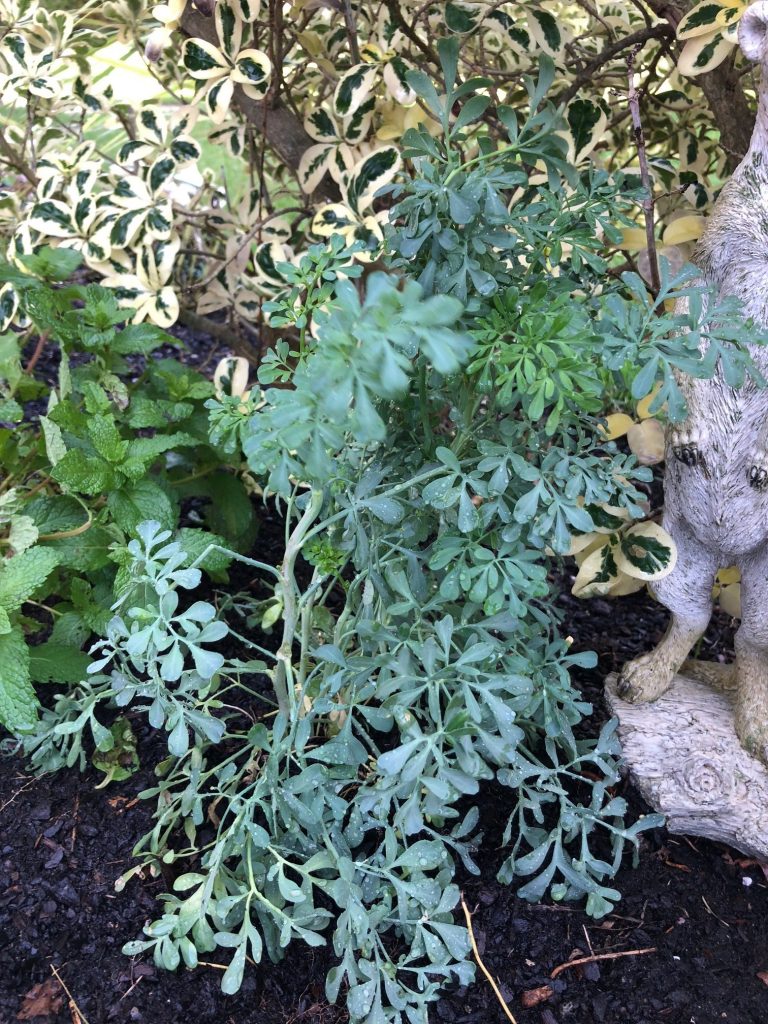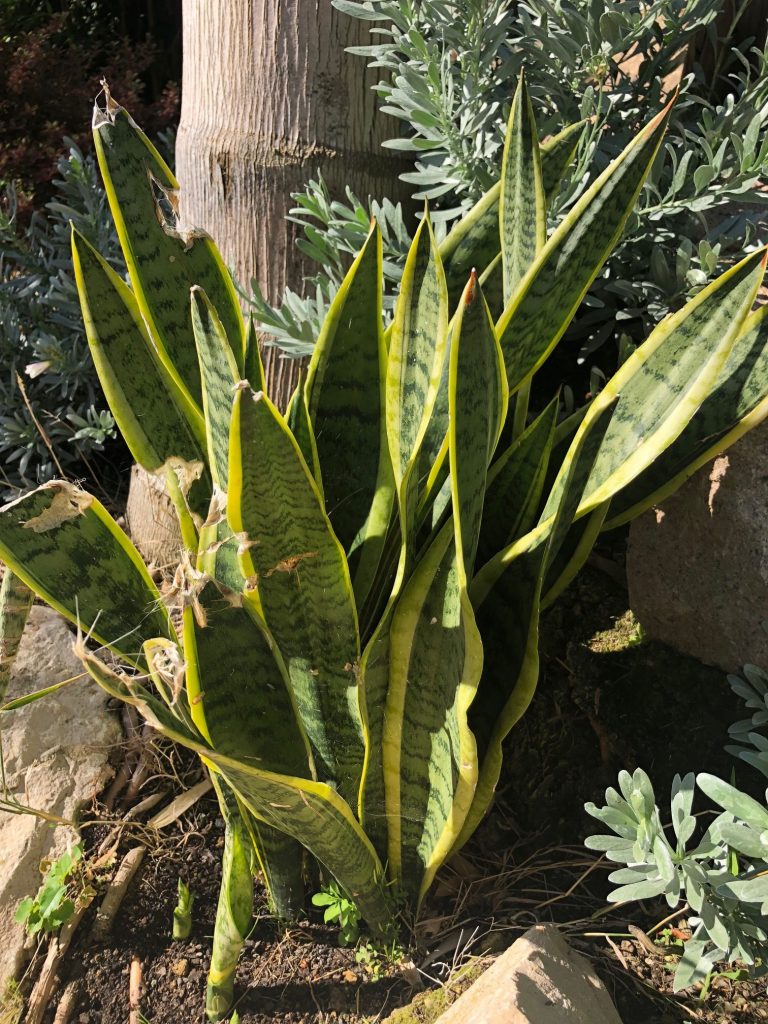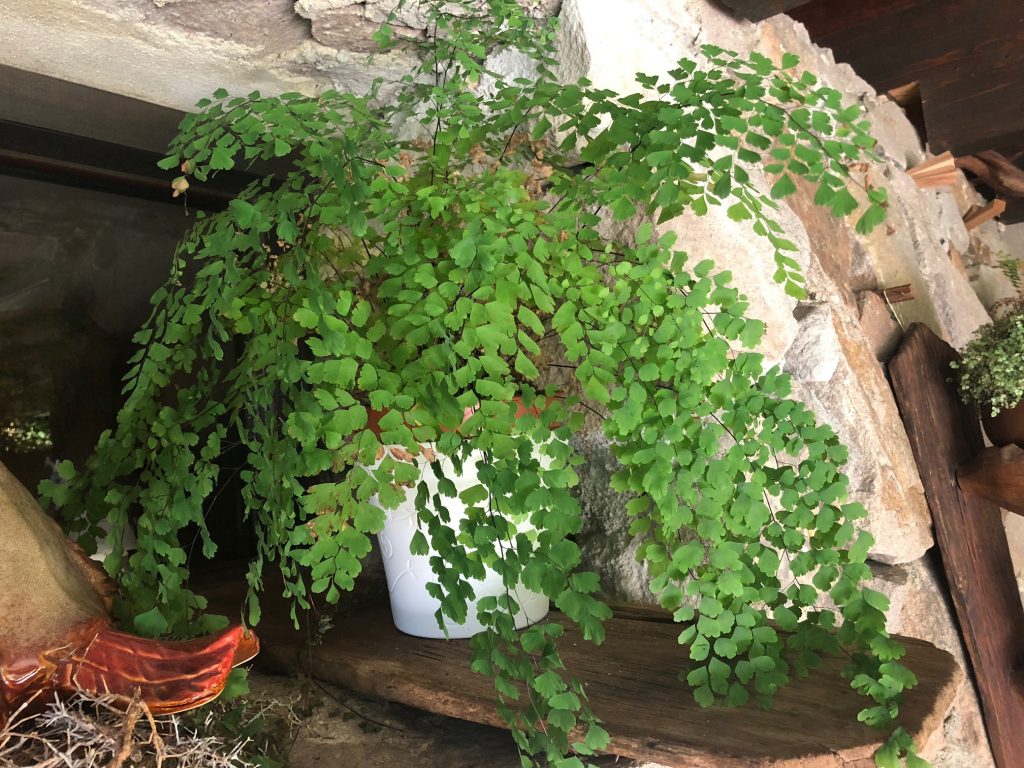-
Lavender

Uki_71’s photo in Pixabay. Lavender is a plant that perfumes and helps to promote the harmony of a home. Lavender, known in the science world by Lavandula Angustifolia, is a small shrub, perennial, from the Lamiaceae family. Its small size (30 to 80 centimeters in height) does not undermine the greatness of its relaxing and tranquil perfume, as well as the blue-violet tone that its leaves offer us. It is also known as Lavandula, its aroma and properties, in particular, the medicinal ones, have long been explored by the pharmaceutical industry, cosmetics, perfumes, and hygiene, among others. The Romans and Greeks also used this plant in their baths, in the preparation of oils and massages.
At home, lavender not only perfumes the environment but also promotes tranquility, harmony and also controls stress situations. -
Sage

Michaela Wenzler’s photo in Pixabay. Sage has been used since antiquity to neutralize bad energies. The Salvia officinalis is a perennial, evergreen subshrub, with woody stems, grayish leaves, and blue to purplish flowers. It is a member of the mint family Lamiaceae and is also known as sage or holy herb.
Sage is used since antiquity to neutralize bad energies. North American Indians used to burn white sage to clear the environment – burning sages releases negative ions into the air, such as those released in the aftermath of thunderstorms. Today the sage is also used to ward off negative influences, to clean unwanted energies and to rebalance the harmony of the house.
The strong properties of sage are also recognized in the kitchen and especially in medicine where it is used to help to treat Alzheimer’s and slow aging (read more about this plant in the aromatic herbs article).
Plant sage in the gardens around the house or have a pot of this plant on your balcony. -
Basil

Tookapic’s photo in Pixabay. Burning the basil essence neutralizes the negative energies and misunderstandings inside a home. The lookalike hearts leaves’ offer a fresh, strong and burning perfume. The burning of its essence neutralizes negativity and misunderstandings within the house, it is not a coincidence that it has long been seen as a symbol of love and fertility. Many experts even point out that the essence of this plant helps open the meridian of the heart, facilitating the movement of energy between the heart and hands. Basil is also associated with honesty, clairvoyance, stimulating the mind to surrender to happiness.
-
Rosemary

Hans Braxmeier’s photo in Pixabay. It is considered the plant of joy, because it purifies the environment of unwanted energies, fights sadness, depression and discouragement. The unique, refreshing and energetic scent emanating from the slender, gray-green leaves of Rosmarinus Officinalis has delighted Man since immemorial times. It is considered the plant of joy, because it purifies the environment of negative energies, fights sadness, depression and discouragement. It is seen as a protective plant that also enhances memory, self-esteem and is recognized as a symbol of happiness. The properties of rosemary make this a magic plant for the body, soul, and spirit. In addition to being an excellent condiment of various culinary dishes, the dried and fresh leaves are used in teas and tinctures, while the flowers are the nectar for the elaboration of essential oils (read more about this plant in this site in the article on aromatic plants).
-
Rue

Esfera Dourada’s photo. The rue is a plant that protects the house, for example, from the “evil eye”. It is considered a powerful plant to eliminate bad energies and transform them into positive energies. But if it absorbs harmful energies in large quantities and in a very intense way, it quickly dries and dies.
The rue is also seen as a strong protector of the envy feelings or bad luck energies, or as the popular wisdom says the “evil eye”. In addition to the natural plant, the essence or incense of rue can also be used to purify the environments. -
Beaucarnea Recurvata

Esfera Dourada’s photo. Beaucarnea is the type of plant suitable to be placed in the corners of a room. Known also as the Elephant’s Foot, due to its strong and imposing trunk at its base, where it accumulates water. This plant is a native of Latin America but adapts easily to other climates and indoor it lives well with indirect sunlight. Its aspect resembles to a palm tree, and its dense leaves, like a large mane of hair, make the environment look more tropical. Besides beauty, the Beaucarnea is a type of plant suitable to be placed in the corners of a room, because its vibratory support attracts and transforms the negative energies that accumulate there.
-
Snake Plant

Esfera Dourada’s photo. Known as mother-in-law’s tongue, it protects against bad energies. Known as mother-in-law’s tongue (its scientific name is Sansevieria trifasciata) makes protection against bad vibrations its business card. A reputation that was built on the legend that says that St. George, a Christian saint who killed a dragon with his sword as he was facing the evil forces. It is the resemblance of its sharp, spear-like leaves, which gives it the power to purify and protect itself from feelings of anguish, depression and envy and other harmful energies.
But be aware that despite being a strong, beautiful and fragrant plant, its leaves are toxic, so there should be special care with children and pets. It is recommended that the Snake Plant should be placed outside the house, usually near the entrance door, since the shape of its leaves may suggest a fighting atmosphere. There are those who choose to put them indoors, but in the non-common areas, laundry rooms or bathroom. -
Peace lily

Mfiol’s photo, by Maria, in Pixabay. The lily converts harmful energies, like waves emitted by electric and electronic electromagnetic, into clean energies, purifying the air. From the Araceae family, the Spathiphyllum (scientific name) symbolizes celestial purity, innocence, passion, eroticism and constitutes a great ally of the harmony of the home. This plant transmutes the harmful energies, as it absorbs the electromagnetic waves emanated by the electrical and electronic devices, purifying the air. If that were not enough, it also offers us a magnificent flower that brightened our decoration. The Peace Lily, flowers all year round, particularly in spring and summer. It survives easily in the mid-light, in mild temperature, without great maintenance and multiplies easily. However, it is important to remember that its leaves are poisonous, so care is needed with children and pets.
-
Bryophyllum

Irina_kukuts’ photo in Pixabay. Bryophyllum is a specialist in absorbing and treating the harmful energies of the environment where it is inserted.
From the Crassulaceae family, it is a species native of South Africa, Madagascar, and Asia, but today it is available everywhere in the world. There are about 30 different species of Bryophyllum. Usually, its leaves have a shape similar to small and narrow greenish barges in which the ends are lined by many propagules. These as they ripen, they fall to the ground and spread easily. This is a plant that absorbs and treats the harmful energies of the environment where this type of energy is inserted or cleans it whenever it is transferred to it. -
Ficus

Esfera Dourada’s photo. Ficus is known for the ability to purify harmful energy and for its strong acoustic absorption capacity. A native of Asia and from the family of Moraceae, the Ficus is an excellent indoor plant that through its green leaves gives a wild touch to the environment. There are numerous varieties from the bonsai version with an elegant line or the spoon-shaped Ficus with wavy leaves that look like waves of a warm tropical breeze.
It is venerated as a sacred tree, a symbol of fertility and abundance that offers an environment of harmony and comfort.
This plant, especially the Ficus benjamins, is known for its capacity to purify harmful energy and has a strong acoustic absorption capacity. The Ficus canopy is able to reduce the sound to five decibels, managing to attenuate the great sound impact in areas of large surfaces and houses. If you put a group of ficus plants in a corner of the room you will find that you can easily obtain the silence and peace that you seek for your rest.
Another great advantage of this species is its resistance, it tolerates high temperatures, low sunlight and requires little moisture. -
Dieffenbachia

Dference’s photo in Pixabay. The Dumb Cane is a toxic plant, so it should be out of reach of children and pets. Also known as the Dumb Cane, Dieffenbachia (scientific name) belongs to the Araceae family and is a native of Costa Rica and Colombia, but today it can be found a little throughout the world. It can reach 50 centimeters and its leaves are large, bright and with white or yellow spots, although it can be found with other patterns. The Dumb Cane can give flower in the summer, but attention because the whole plant is toxic, in particular, the segregation it produces through the leaves (a kind of drops). Its toxicity is only real if it is ingested. This type of plant must, therefore, be placed in areas inaccessible to children or animals.
But in spite of being a poisonous plant, this one is very good to absorb and to transform bad energies, mainly of malicious people.
The Dumb Cane is a plant that is easy to grow, requires average light and does not require much water (let the soil dry slightly before watering). -
Dracaena

Esfera Dourada’s photo. Dracaena is widely used in harsh environments thanks to its high resistance. There are many species of this rustic plant from the asparagáa family that is a native of the African continent, although today it is common to find it in any region of the globe. The Dracaena can reach 15 meters high and 30 centimeters wide. Its narrow, pointed leaves are robust, which makes this plant very resistant. It is widely used in interior decoration, as it adapts well to low temperatures (particularly in air-conditioned rooms), with low light and inconstant watering. Even gardeners with little ability can keep them luscious.
The characteristics of the dracaena allow absorbing and transforming easily the bad energies and cleanse the space where they are inserted. A NASA study reveals that this plant contributes to eliminate, for example, products such as formaldehyde, xylene, and toluene.
-
Kalanchoe

JacLou DL’s photo in Pixabay. This succulent is ideal for absorbing the bad energies of electrical and electronic devices. It is a succulent plant that produces an abundant flowering, with the small flowers grouped in bouquets, which according to its kind offers us a different color. The flowering season is between late fall and spring. The kalanchoe is a native of Africa and Madagascar, being able to reach 30 centimeters of height.
To get new plants from a pot of kalanchoe, just use the buds that appear on the edges of the adult leaves.
It is a generous plant that only asks for care and attention to be cheerful and radiant. Besides the kalanchoe is a great stabilizer of environments, because despite its small size easily absorbs the bad energies, in particular, the radiations of electrical and electronic devices, transforming them into clean energies. It is also very common in vibrational language to harness the abilities of kalanchoe to transmute harmful energies that affect Human Beings.
-
Adiantum

Esfera Dourada’s photo. The Adiantum has therapeutic properties as anti-inflammatory, depurative, expectorant, vermifuge, antifungal and antibacterial. It is also known as the walking fern or the maidenhair fern, but its scientific name is Adiantum. It is a fetus that can be found in almost all regions of the planet and from the earliest times, it is used as an ornamental plant and also in popular medicine to relieve various stresses. Possessing several therapeutic properties such as anti-inflammatory, depurative, expectorant, vermifuge, antifungal and antibacterial. In energetic terms, the Adiantum attracts the bad energies and the people says that it scares away the evil eye.
A herbaceous, with a perennial cycle, that can reach up to 50 centimeters of height. It prefers damp places and likes indirect light. -
Dragon-tail Plant

Pixabay’s photo. The Dragon-tail Plant is a climbing plant that reproduces very easily without direct sunlight. It is a climbing plant of the Araceae family, its scientific name is Epipremnum Pinnatum, a native of French Polynesia, that is now possible to find in the five continents. Its green leaves with yellow spots reproduce easily, if there is enough space, indirect light (does not need a lot of light) and moisture as much as possible. However, great care is needed with children and pets because it is a toxic plant. In energy terms, the Dragon-tail Plant is a true guardian of the home as it helps to eliminate the bad energies that contaminate the home.




